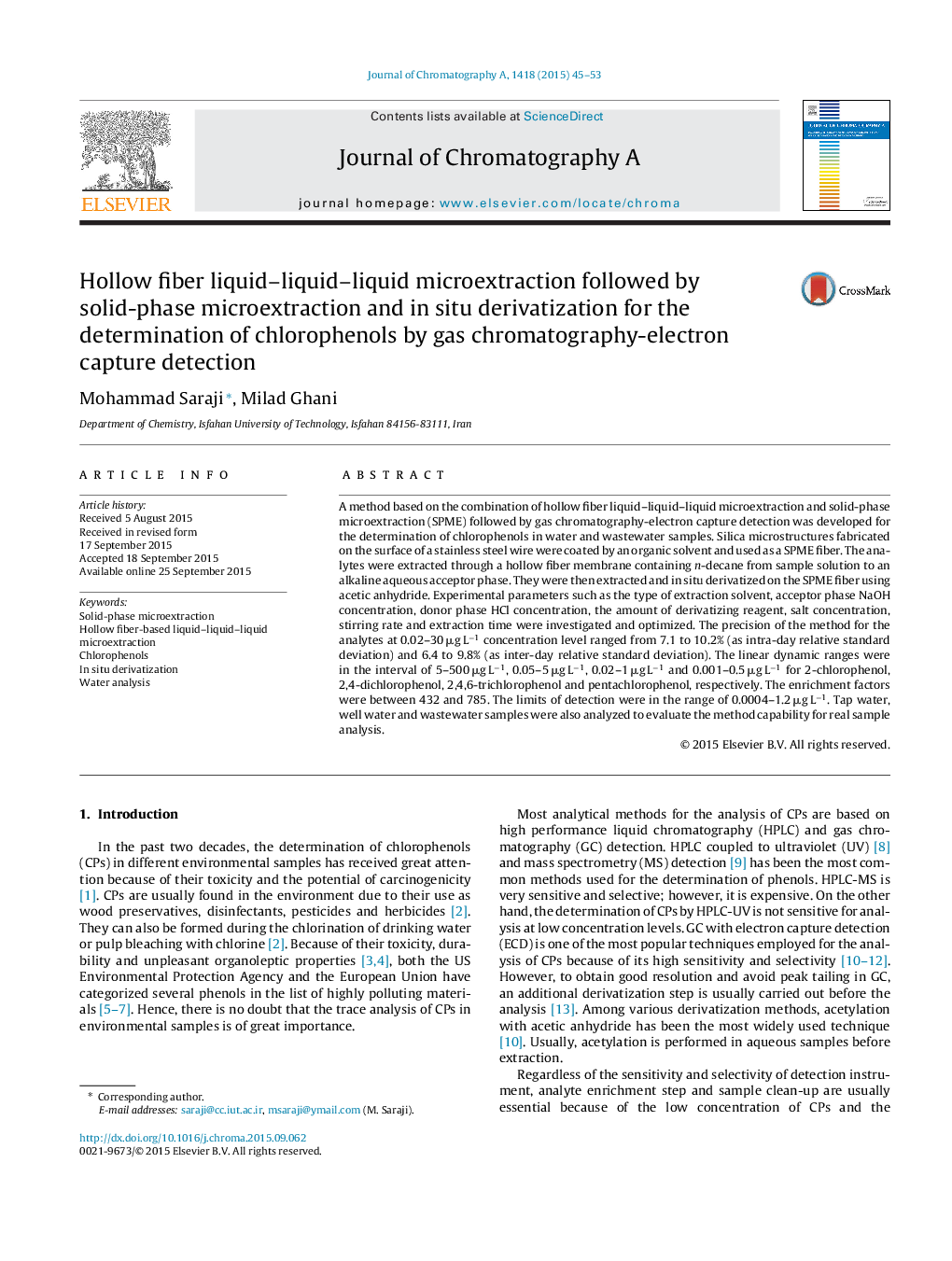| Article ID | Journal | Published Year | Pages | File Type |
|---|---|---|---|---|
| 7611175 | Journal of Chromatography A | 2015 | 9 Pages |
Abstract
A method based on the combination of hollow fiber liquid-liquid-liquid microextraction and solid-phase microextraction (SPME) followed by gas chromatography-electron capture detection was developed for the determination of chlorophenols in water and wastewater samples. Silica microstructures fabricated on the surface of a stainless steel wire were coated by an organic solvent and used as a SPME fiber. The analytes were extracted through a hollow fiber membrane containing n-decane from sample solution to an alkaline aqueous acceptor phase. They were then extracted and in situ derivatized on the SPME fiber using acetic anhydride. Experimental parameters such as the type of extraction solvent, acceptor phase NaOH concentration, donor phase HCl concentration, the amount of derivatizing reagent, salt concentration, stirring rate and extraction time were investigated and optimized. The precision of the method for the analytes at 0.02-30 μg Lâ1 concentration level ranged from 7.1 to 10.2% (as intra-day relative standard deviation) and 6.4 to 9.8% (as inter-day relative standard deviation). The linear dynamic ranges were in the interval of 5-500 μg Lâ1, 0.05-5 μg Lâ1, 0.02-1 μg Lâ1 and 0.001-0.5 μg Lâ1 for 2-chlorophenol, 2,4-dichlorophenol, 2,4,6-trichlorophenol and pentachlorophenol, respectively. The enrichment factors were between 432 and 785. The limits of detection were in the range of 0.0004-1.2 μg Lâ1. Tap water, well water and wastewater samples were also analyzed to evaluate the method capability for real sample analysis.
Related Topics
Physical Sciences and Engineering
Chemistry
Analytical Chemistry
Authors
Mohammad Saraji, Milad Ghani,
